The fantastic fairy-tale towns that NEED to be on your travel bucket list
Plucked straight out of a fairytale

Yasonya/Shutterstock
From medieval chocolate-box towns to dainty villages clinging to cliff edges, plenty of real-life places look like they’ve been swept right from the pages of a fairytale book. Full of history, charm and plenty of unusual quirks, they all share one thing: a little magic.
Read on to discover the most wonderful fairytale locations on the planet...
Hallstatt, Austria
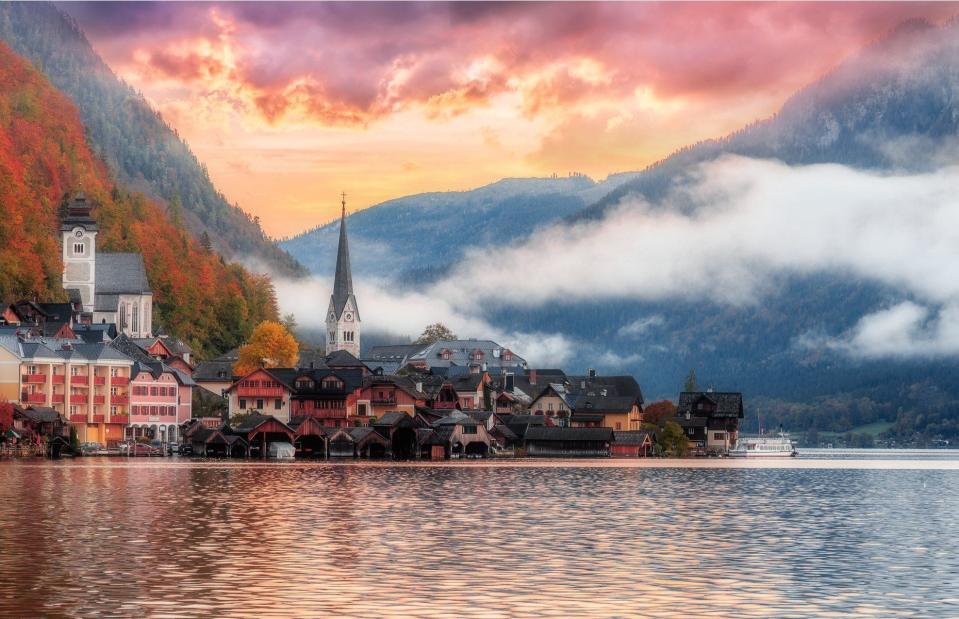
Yevhenii Chulovskyi/Shutterstock
Looking postcard-perfect in this sunset shot, Hallstatt’s cluster of pastel-coloured buildings are hugged by peaks and encircled by low-lying clouds. Located in the mountainous Salzkammergut region, Hallstatt’s long history began with the discovery of salt mines in the region in prehistoric times – possibly as early as 4000 BC.
Today, much of the architecture dates back to the 16th century, with the buildings painted in an array of ice-cream hues.
Göreme, Turkey
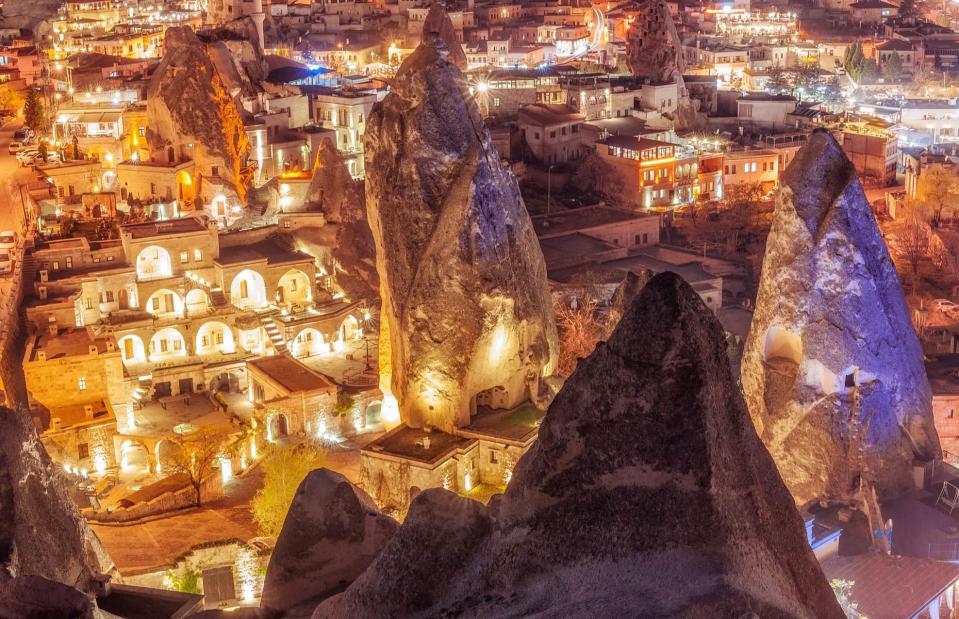
ver0nicka/Shutterstock
Twinkling like a box of precious gemstones by night, the cave buildings of Göreme certainly have a magical feel. Parts of this UNESCO World Heritage settlement were hewn into the rock as early as the 4th century, when small anchorite communities began to carve out cells to live in.
Many of its cave churches, built between the 10th and 12th centuries, were decorated elaborately and today they’re filled with colourful figurative paintings.
Nuremberg, Germany
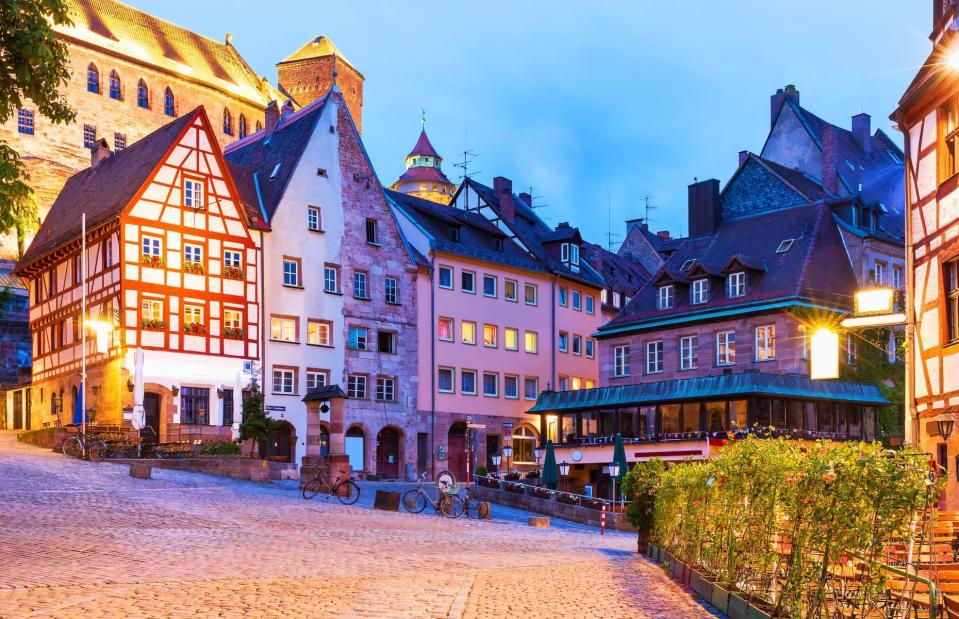
Oleksiy Mark/Shutterstock
While Nuremberg might look every inch the fairytale city, it has a dark history. The Bavarian city, which was first settled in the 11th century, was occupied by the Nazis in World War II and around 90% of the Old Town was destroyed.
The buildings that can be seen today are the work of arduous reconstruction using original stone, which has helped them to retain their historic charm.
Dubrovnik, Croatia

Brendan van Son/Shutterstock
It’s easy to see why the ancient city of Dubrovnik was used as a filming location for fantasy TV series Game of Thrones. With its intricate limestone streets and buildings perched on craggy cliffs, the Adriatic coast gem needs no special effects to look like a fantasy world.
The city’s Baroque buildings were completed by the 13th century, although they have undergone two major restorations since: firstly, after a catastrophic earthquake in 1667, and secondly, after shelling during the Yugoslav Wars in the early 1990s.
Albarracín, Spain

Iakov Filimonov/Shutterstock
Medieval Albarracín is made up of a trickle of rosy-toned houses that look almost as if they’ve been poured onto the hilltop. Located in eastern-central Spain, the town’s walls and first fortress were built between the 10th and 13th centuries, while much of the Old Town, including the Cathedral of San Salvador, dates back to the 16th century.
The buildings’ unique colour comes from gypsum, the local material used to construct them.
Castle Combe, England, UK

Graham Riding/Shutterstock
With its characteristic Cotswolds stone buildings and winding countryside roads, it’s no wonder Castle Combe has often been called the prettiest village in England. The historic site was first settled by Celts in ancient times, before becoming a regional hub for the wool industry during the Middle Ages.
Many of its landmarks, including a market cross, an old water pump and the Church of St. Andrew, were built during this period.
See how we've ranked the prettiest towns in the UK
Sintra, Portugal

Yasonya/Shutterstock
The jewel in Sintra’s crown is Pena Palace, the whimsical 19th-century castle which stands watch over the settlement. Located on the northern slope of the picturesque Sintra mountains, the town was formerly used as a royal summer residence.
Today, it's best known for its historic palaces, 18th-century gardens and picturesque surroundings.
Rothenburg ob der Tauber, Germany
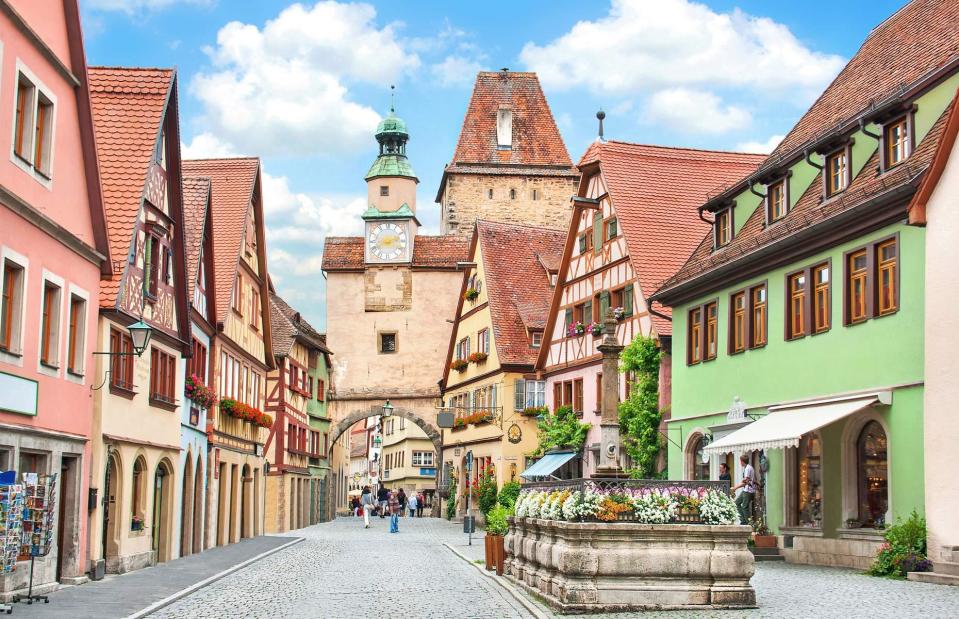
canadastock/Shutterstock
With its storybook streets and candy-coloured houses, Rothenburg ob der Tauber looks almost too pretty to be real. Located along southern Germany’s famous Romantic Road – a stunning route through Bavaria and Baden-Württemberg – the town was established in AD 950 and Rothenburg Castle was built around one hundred years later.
One of the best-preserved medieval settlements in Germany, it retains all of its fairytale charm today.
Shirakawa-gō, Japan
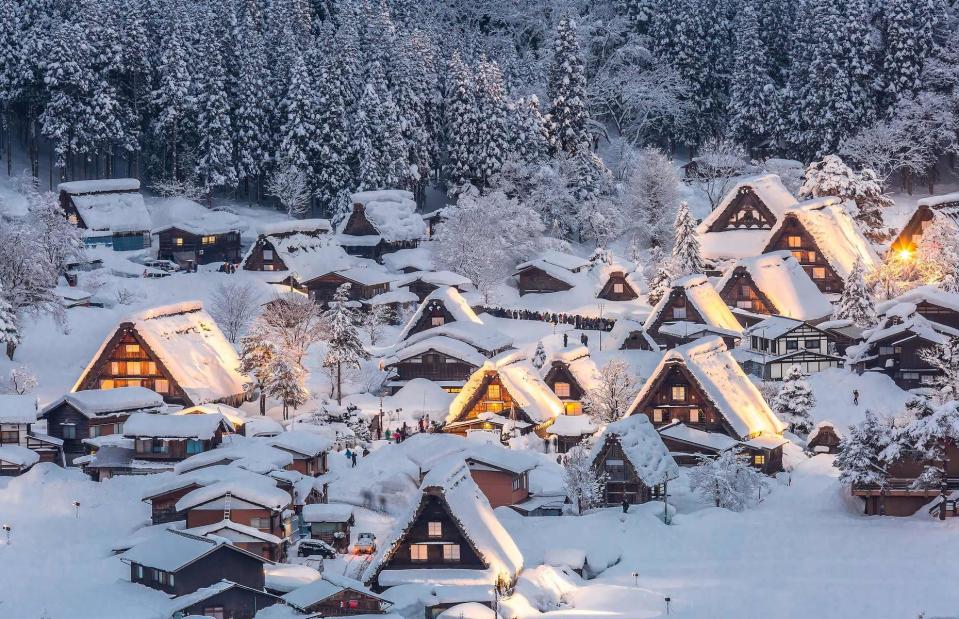
vichie81/Shutterstock
Could this little alpine village be any cuter? Located in the heart of the Shogawa Valley, tucked between remote mountains, Shirakawa-gō’s characteristic steep-roofed houses are as practical as they are pretty.
Built in Gassho-zukuri style (which means 'constructed like hands in prayer') their rooftops are designed to withstand heavy snowfall. Pictured in winter here, illuminated by glimmering lights, it looks like a miniature fantasy world.
Houtouwan, China

oceanfishing/Shutterstock
Abandoned in the early 1990s, the remote fishing village of Houtouwan, located on Shengshan Island off the east coast of China, has since become overgrown with ivy and foliage. With its intriguing green-carpeted buildings blending into the hillsides, it almost looks as if it’s been swallowed up by the land.
While Houtouwan is largely deserted, a small number of its former population remains, making an income from intrepid tourists who come to visit.
Discover the beautiful power of Mother Nature
Grindelwald, Switzerland
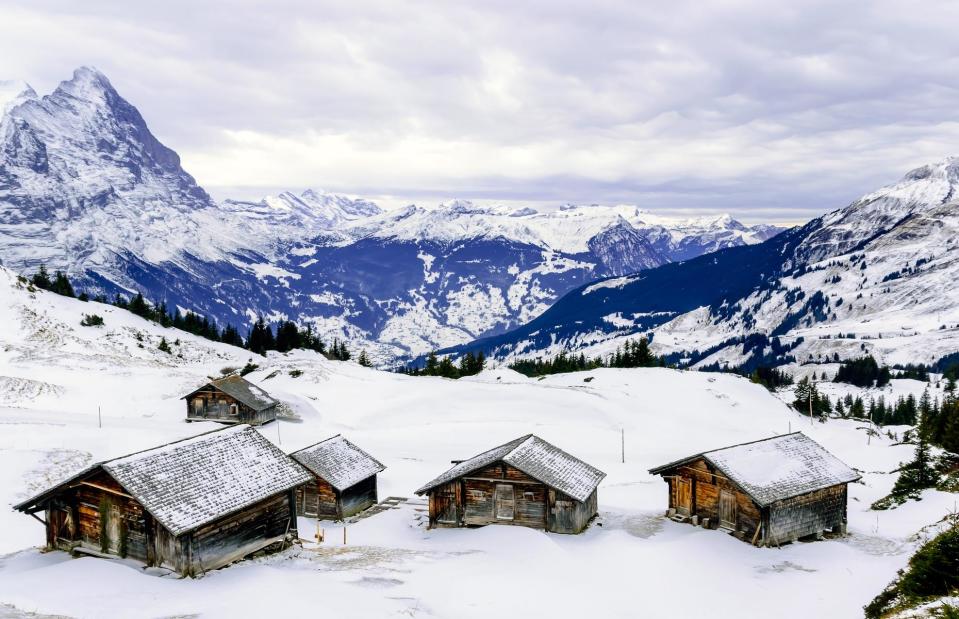
Etaphop photo/Shutterstock
Surrounded by the regal-looking Jungfrau, Mönch and Eiger mountains, the ski village of Grindelwald oozes with alpine charm. It began life as a ski resort at the end of the 19th century and today remains a small yet thriving destination with quaint lodges, mountaintop restaurants and cosy pubs.
The village is beautiful year-round: by summer, its steep slopes are plastered in verdant green; by winter, it’s shrouded in a blanket of snow.
Guatapé, Colombia
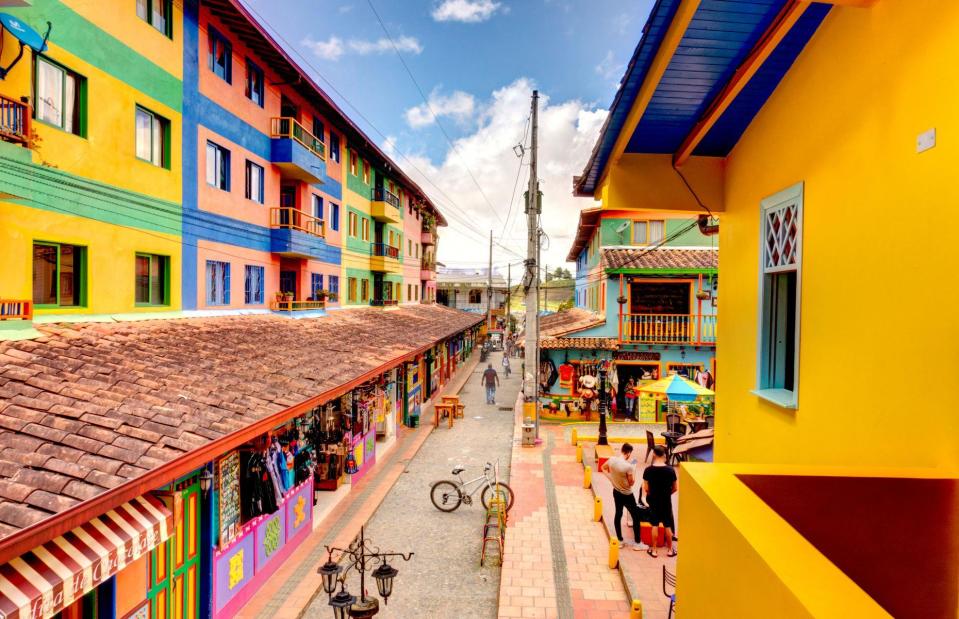
mehdi33300/Shutterstock
Painted in a rainbow of vibrant hues, the Colombian town of Guatapé is as colourful as they come. The most iconic feature of this curious place are its zócalos – colourful panels that line the bottom of buildings – a tradition that started here around a century ago.
Today, they are a vibrant depiction of village life, with some panels telling stories and others advertising local businesses.
Manarola, Italy
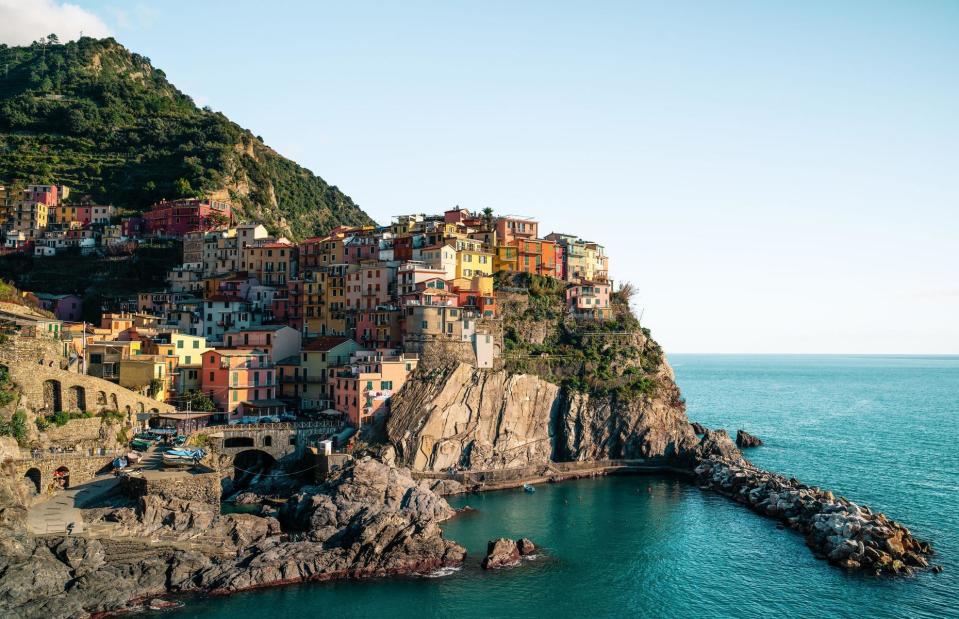
DanieleFiaschiCreator/Shutterstock
With its hotch-potch of colourful houses perched upon a vertiginous stretch of coastline, Manarola looks almost too precarious to be real. The oldest member of Italy’s Cinque Terre, Manarola is thought to have been founded in Roman times.
However, the present village dates back to around the 14th century, when the agricultural industry began to develop and it became renowned for its Sciacchetrà wine.
Portmeirion, Wales, UK
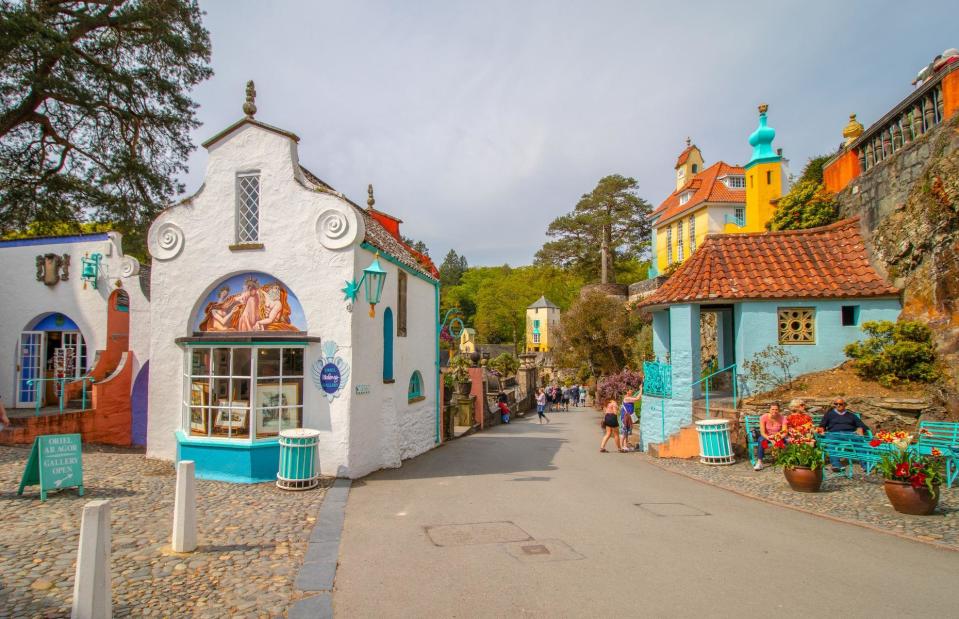
malgosia janicka/Shutterstock
While some villages were built to be functioning communities, Portmeirion was created as a fairytale folly. Built by the Welsh architect Clough Williams-Ellis between 1925 and 1976 the colourful, Portofino-inspired buildings are gathered among exotic gardens and sandy beaches, punctuated by quaint cafés, restaurants and even an Italian ice cream parlour.
The area's steam train still trundles along one of the oldest tracks of its kind.
Rye, England, UK

Helen Hotson/Shutterstock
Rye is a charming maze of cobbled streets, half-timbered houses and medieval relics. Situated on the south coast of England, it was surrounded on all sides by water in medieval times.
It was made a Cinque Port town in 1336, meaning it received tax exemptions and other privileges in return for being used for defence. Since then, Rye has been separated from the sea as the estuary has silted up, meaning it’s now around two miles (3.2km) from the coast.
Hamnøy, Norway

FRiMAGES/Shutterstock
Draped in snow and bathed in violet-tinged sunlight in this photograph, Hamnøy’s colourful wooden houses, stacked onto the cliffs on stilts, certainly look like the stuff of fantasy. Located on its own small island in Norway’s Lofoten Islands, Hamnøy started life as a fishing village some one thousand years ago.
Wooden cabins were used to house fishermen when they came to visit for an annual fishing event – the oldest that still stand today date back to 1890.
Hobbiton, New Zealand
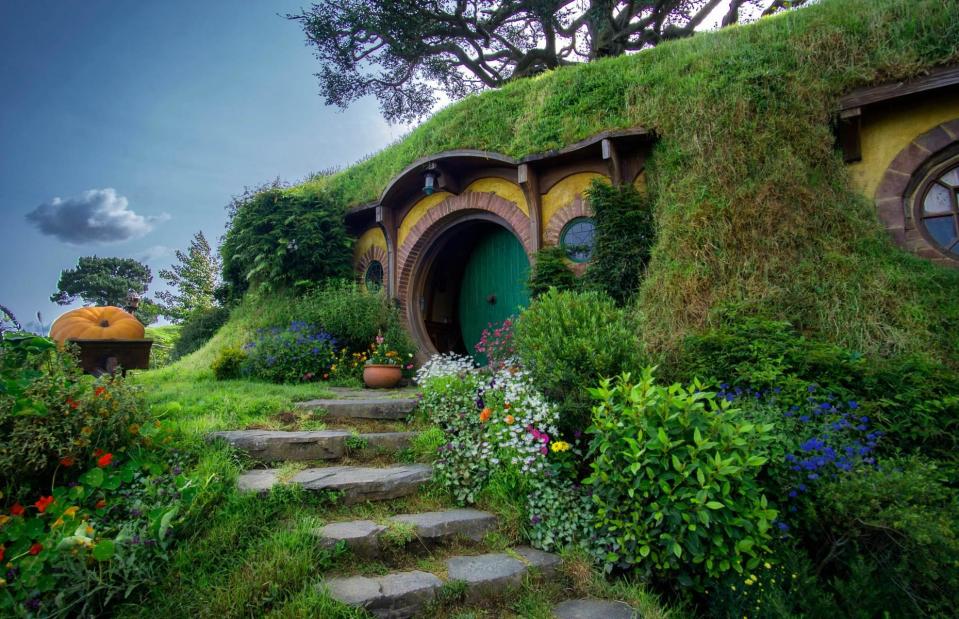
D.W.Loi/Shutterstock
It might not be a real settlement but Hobbiton certainly packs in the fairytale charm. The movie set used in The Lord of the Rings and The Hobbit trilogies, located in New Zealand’s Waikato region, is set on a sheep farm and includes cute grass-covered 'hobbit holes'.
Located in picturesque farmland, Hobbiton, or 'the Shire' as it’s sometimes called, gives a glimpse into the fantasy world of the iconic films.
Quedlinburg, Germany
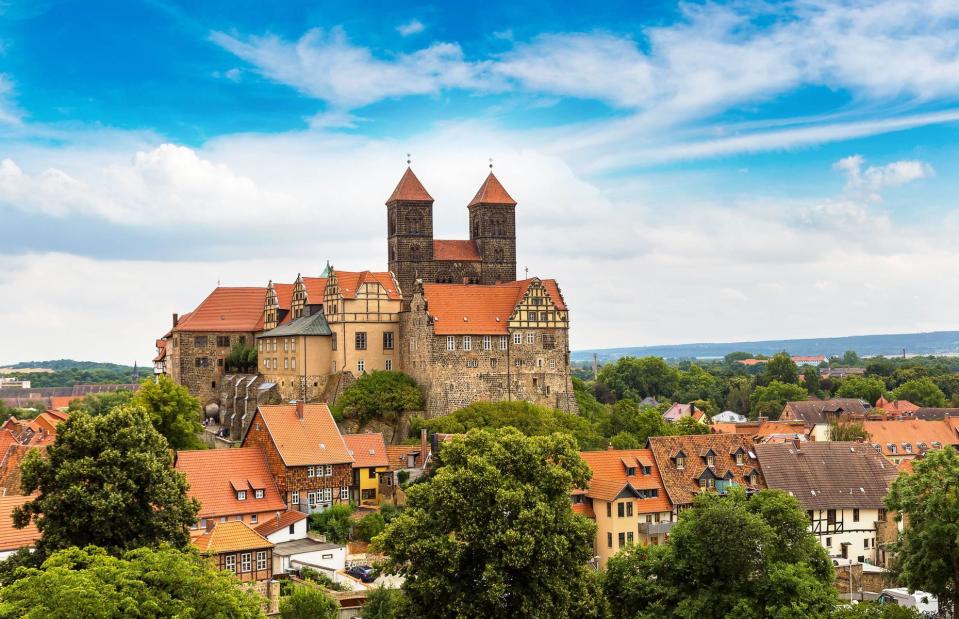
S-F/Shutterstock
Quedlinburg briefly served as the capital of the East Franconian German Empire during the 10th century, when it was ruled by King Heinrich I. In AD 936, his widow, Mathilde, founded a convent and the town was ruled by its Abbesses for the next 800 years, until Napoleon invaded in 1802.
The town certainly has a mythical atmosphere, with its Romanesque castle complex soaring out of the hilltop, surrounded by a patchwork of half-timbered houses and clusters of trees.
Bacharach, Germany
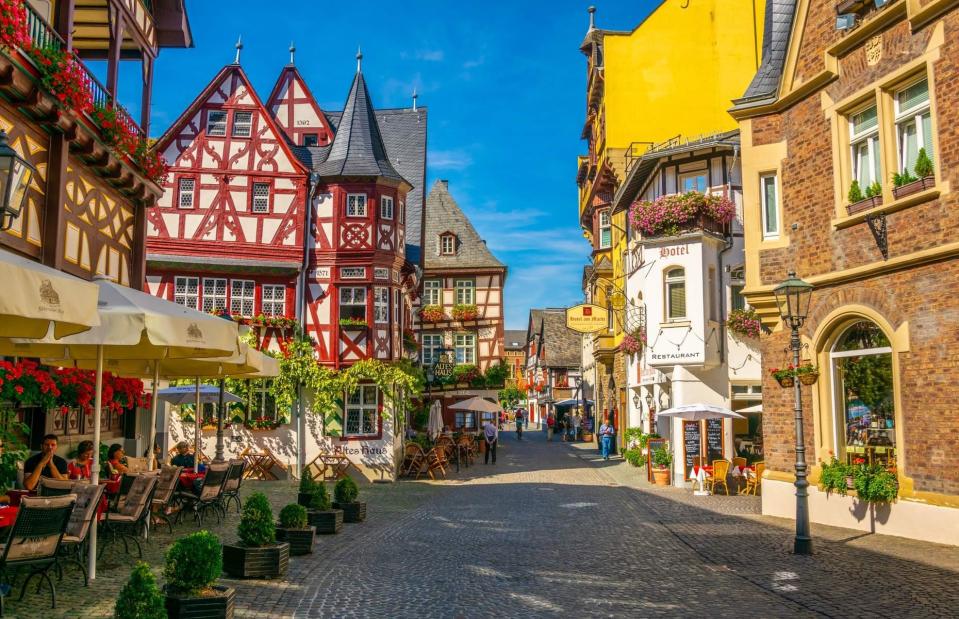
trabantos/Shutterstock
You could be forgiven for thinking that Bacharach is the set of a fantasy film. The quaint German village, situated on the bank of the Rhine, is full of medieval gems.
There’s Burg Stahleck, a 12th-century castle which currently serves as a hostel; the ancient ruins of Wernerkapelle, built between 1289 and 1430; and of course the idyllic Altes Haus, built in 1368. This red-and-white timber-framed building, with its whimsical turrets and gables, looks completely frozen in time.
Alberobello, Italy
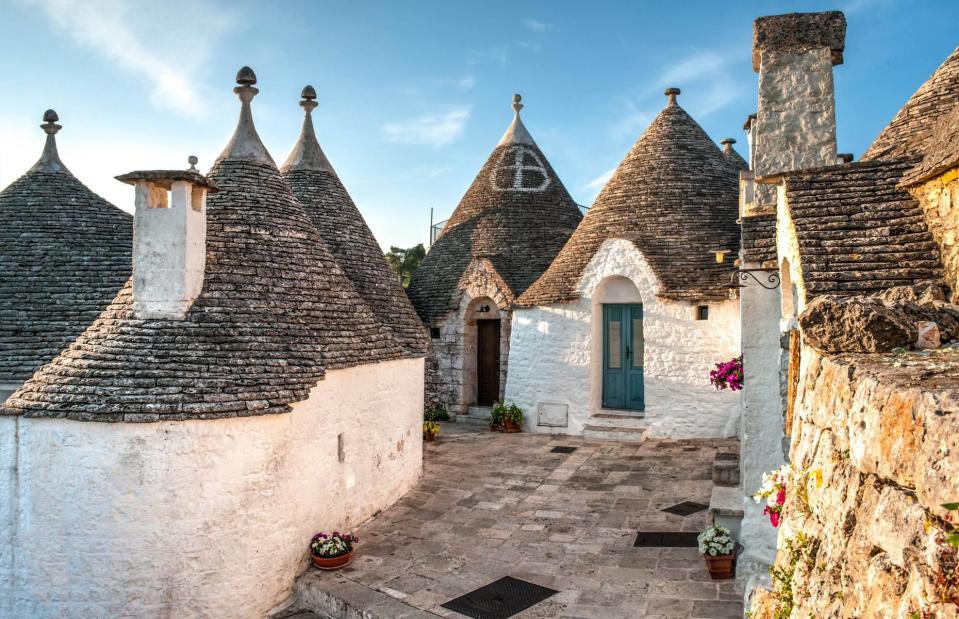
Svitlana Belinska/Shutterstock
The conical-roofed, whitewashed houses of Albarello look like they’d be better suited to mythical creatures than human beings. Located in southern Italy’s Puglia region, just at the top of the boot’s heel, the town is best known for these traditional trulli buildings today.
They were constructed from local limestone using a prehistoric building technique, with the oldest ones dating back to the 14th century.
Perast, Montenegro
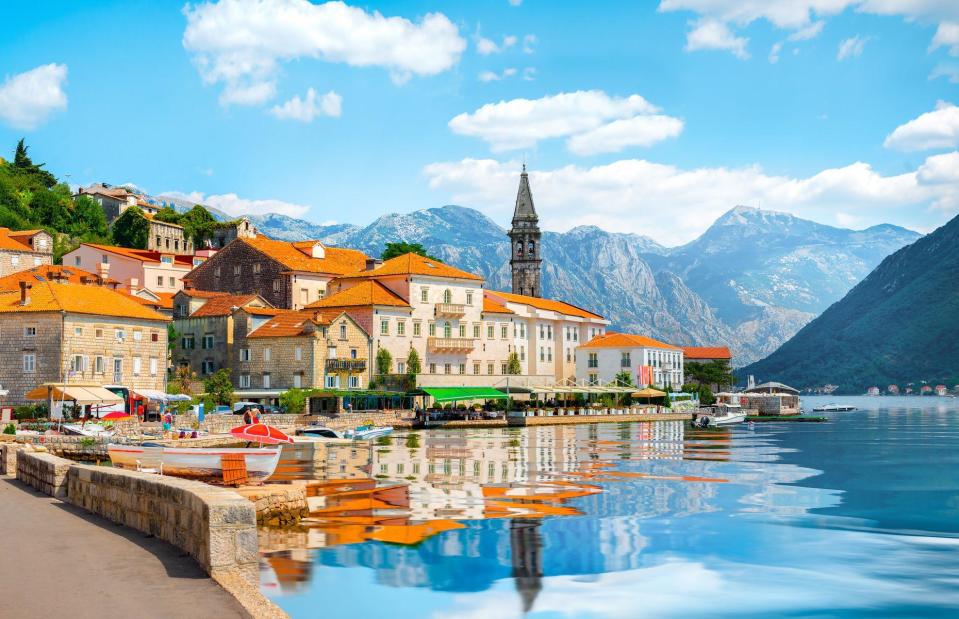
givaga/Shutterstock
Perast is a tranquil town in Montenegro’s Kotor Bay. Met by mirror-like waters that perfectly reflect its terracotta-roofed houses, the town looks as pretty as a picture.
Don’t be fooled by its small size – it has a whopping 19 churches, which includes the unfinished Church of St. Nicholas. The spire of the 17th-century church rises in the background of this enchanting photo.
Simiane la Rotonde, France
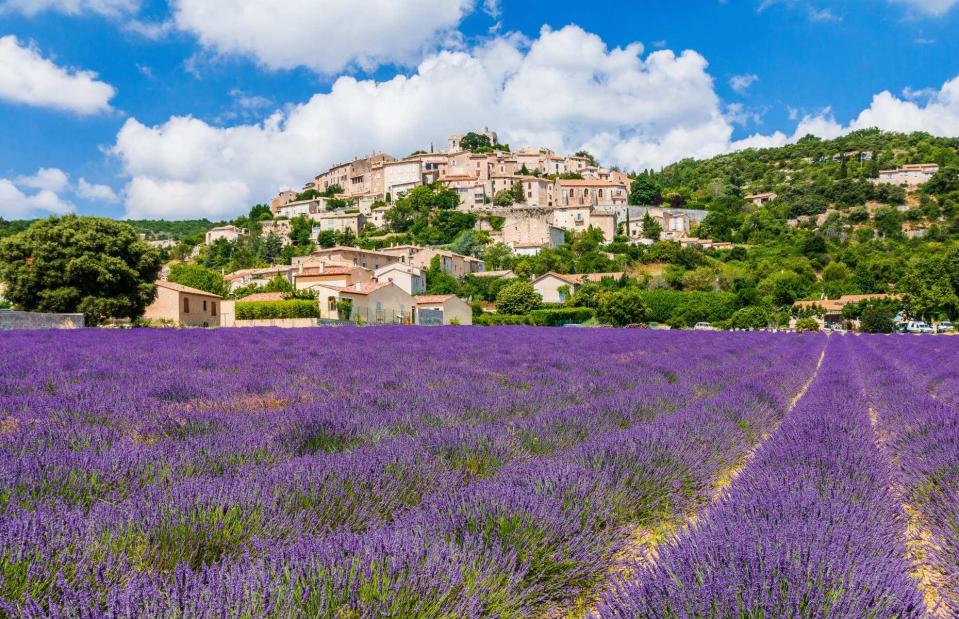
Izabela23/Shutterstock
The hilltop commune of Simiane la Rotonde looks especially striking during the summer, when it sits above a luxurious rug of Provençal lavender. It owes its name to the rotunda of a 12th-century castle perched at the top of the hill, which currently serves as the setting for the annual Festival of Ancient Music and numerous exhibitions.
With its narrow houses stacked onto the steep slopes, the village is as quaint as you can get.
Richmond, Tasmania, Australia

Auscape International Pty Ltd/Alamy Stock Photo
Nestled in the charming Coal River Valley wine region of Tasmania, just 15 miles (24km) northeast of Hobart, you'd struggle to find a more picturesque town in Australia than this place. Beneath its chocolate-box good looks and tasty wine offerings though, Richmond boasts a rich history, with several structures dating back to the early 19th century.
The town's most famous and photographed landmark is Richmond Bridge. Built by convicts in the 1820s, today it is the oldest bridge in Australia that's still in use. It's pictured here with St John's Catholic Church, completed in 1837 and the country's oldest continuously used Catholic church.
Ortahisar, Turkey

DenisProduction.com/Shutterstock
There’s something otherworldly about Ortahisar, a rustic town located in Turkey’s Cappadocia region. Its best-known feature is the historic fortress, built onto one of the region’s iconic 'fairy chimneys' (rock columns), which has steadily eroded away during the past few centuries.
Besides this, Ortahisar’s patchwork of stone houses and caves, melding seamlessly with the rock face, have an almost model-village feel.
Tlalpujahua, Mexico

Angela Ostafichuck/Shutterstock
We simply had to include a place known around the world as the 'Town of the Eternal Christmas'. Nestled in the northeast of the state of Michoacán, Tlalpujahua is famous for its blown-glass Christmas spheres and is now home to over 300 workshops dedicated to this most festive of art forms.
Taking place yearly, the 'Fair of the Spheres' (pictured) sees local artisans selling their seasonal wares in a Bavarian-style setting. Other reasons to visit include the Casa de Santa Claus, a store that sells Christmas décor year-round, and the Santuario del Carmen, a breathtaking 18th-century Baroque church decorated with saints and fantastical figures.
Ait Ben Haddou, Morocco
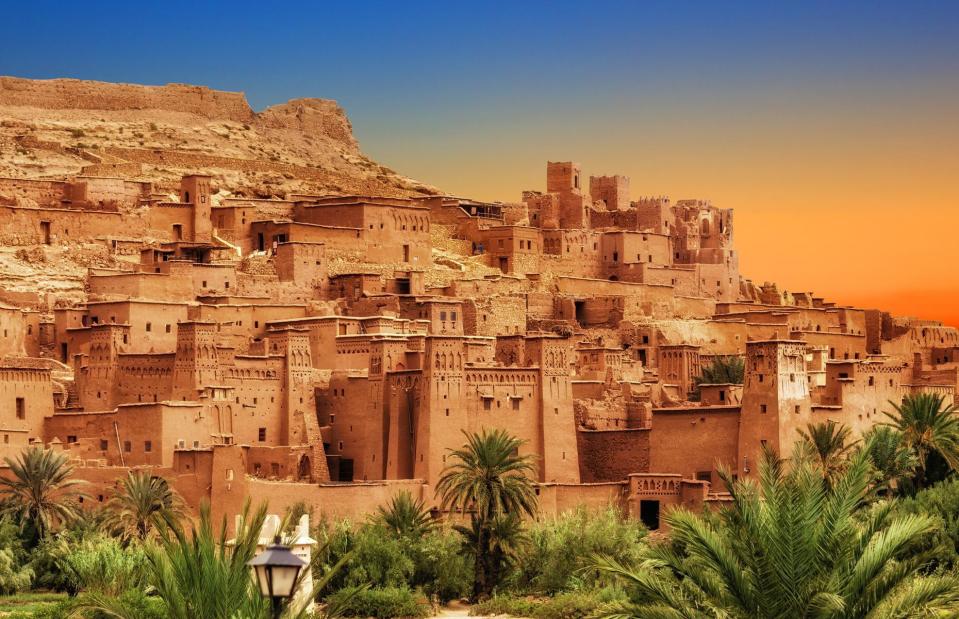
Jose Ignacio Soto/Shutterstock
In the foothills of the Atlas Mountains lies the ksar (fortified village) of Ait Ben Haddou, whose earthy red hues are lit up to majestic effect at sunset. An impressive incarnation of southern Moroccan architecture, the fortress is thought to date back to the 17th century, although it was created in the style of much earlier buildings.
Over the years, it has been a filming location for film and television series including Lawrence of Arabia, Jesus of Nazareth, The Mummy and Gladiator.
Júzcar, Spain
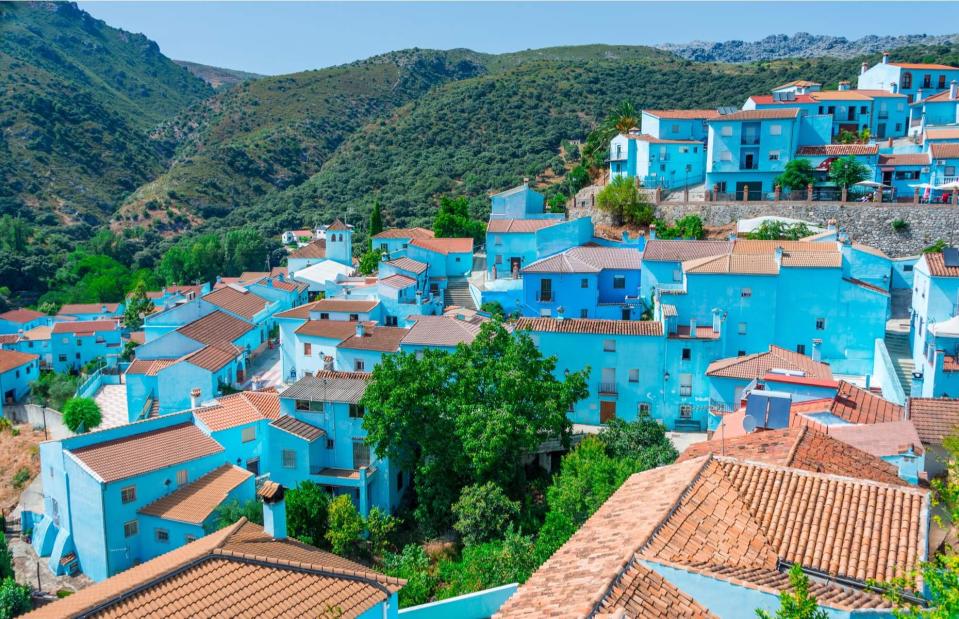
cineuno/Shutterstock
There’s a fascinating story behind Júzcar’s bright blue buildings. In 2011, residents of the Andalusian village were approached by Sony Pictures, who requested to paint its whitewashed houses blue as a marketing ploy for The Smurfs movie. After some initial concerns, they agreed and the entire place was turned Smurf-blue.
However, the following year, when Sony attempted to revert the village to its original white, locals refused as the Smurf connection had led to an explosion in tourism.
Colmar, France
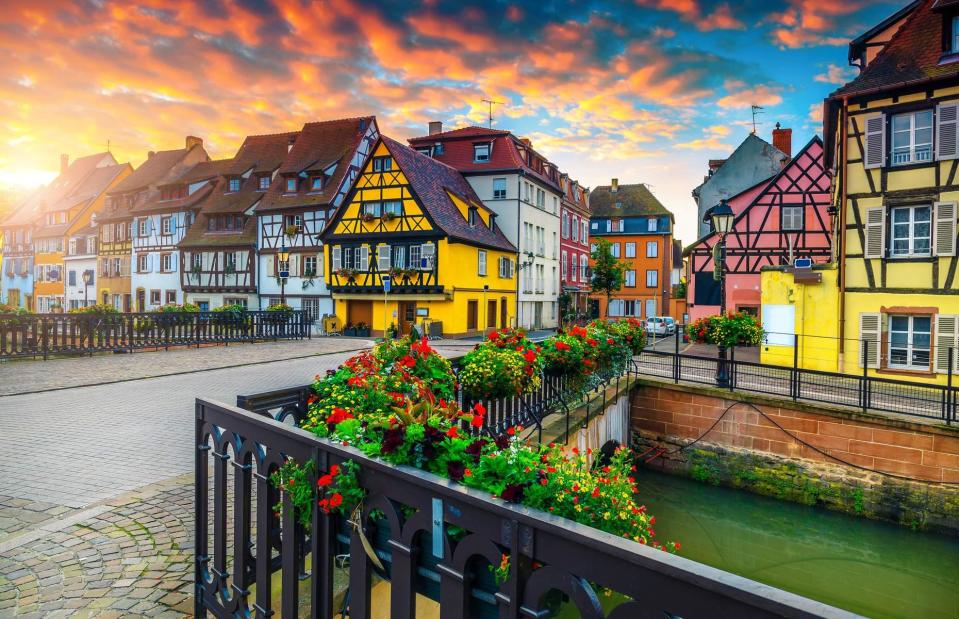
Gaspar Janos/Shutterstock
Painted in a joyful array of sweet-shop hues, the riverside village of Colmar is totally idyllic. Located in France’s Alsace region, near the German and Swiss borders, it’s full of historic treasures.
Among them are Musée d'Unterlinden, a former convent turned museum; the home of Frédéric-Auguste Bartholdi, the sculptor who created the Statue of Liberty; and plenty of Alsatian Renaissance houses dating back to the 16th and 17th centuries.
Palangan, Iran
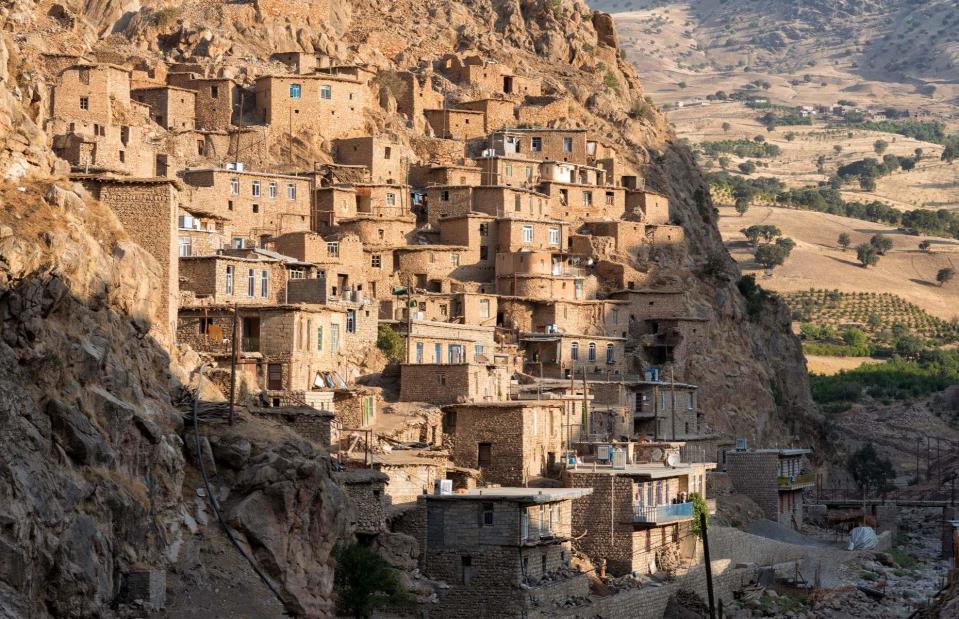
Viktor Molnar/Shutterstock
The small Iranian-Kurdish village of Palangan is embedded into a rock face so steep, it looks almost vertical. With a population of around 1,000, the village has been inhabited since the pre-Islamic period.
With its vertiginous position and terraced homes blending into the mountain, it certainly looks storybook-inspired.
Český Krumlov, Czechia

Zeedoherty/Shutterstock
This dinky town is swept up in fairy-tale magic under a blanket of snowfall. Located on a meander of the Vltava River, Český Krumlov is filled with impressive Renaissance, Baroque and Gothic architecture.
Most striking of all is the 13th-century castle that the town was built around. It also has a well-preserved medieval street layout, plenty of ornate burgher houses and a town square that also dates back to the 13th century.
Bonifacio, Corsica, France
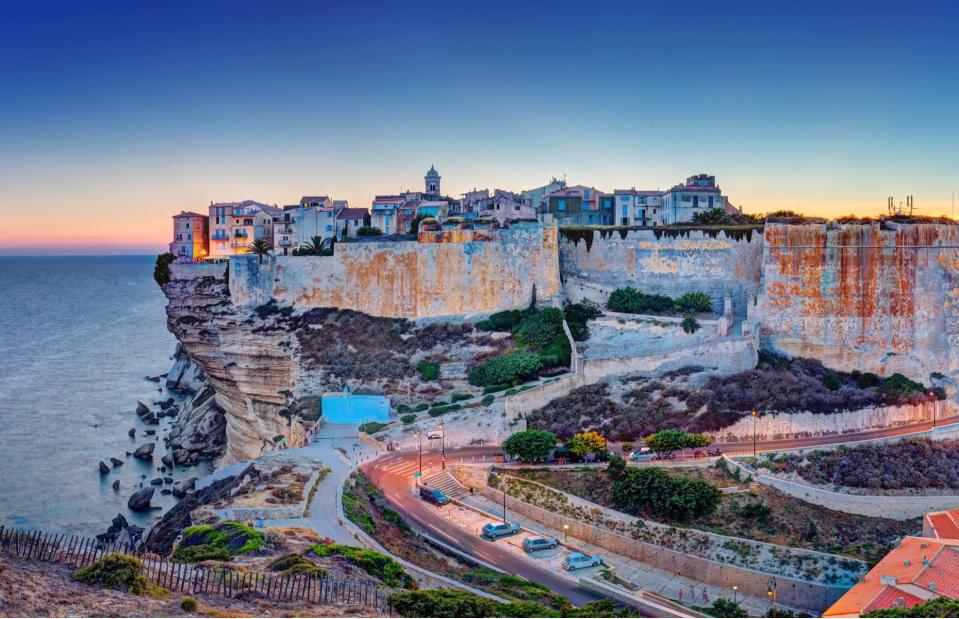
infografick/Shutterstock
With its precarious position on top of a narrow limestone plateau, Bonifacio looks especially spellbinding by nightfall, when its buildings are illuminated by polychromatic lights. Located on Corsica’s southernmost tip, the settlement was established in about AD 828 by Count Boniface of Tuscany.
It became an important strategic location for defending Corsica against pirates.
Rocamadour, France
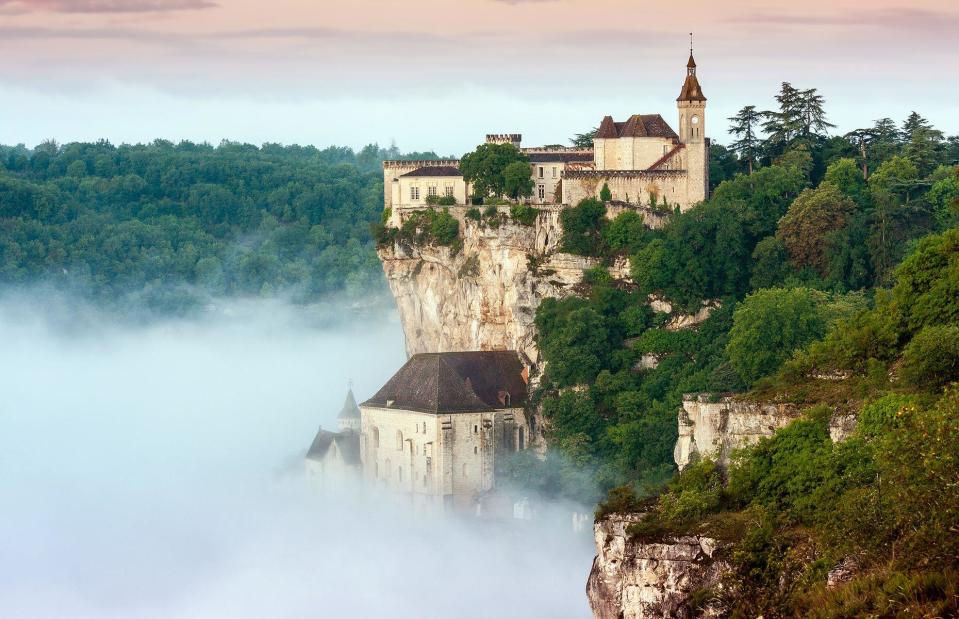
duchy/Shutterstock
The clifftop town of Rocamadour looks especially enchanting in this cloud-draped shot. Crowned by a 14th-century château, it comprises a cluster of historic buildings clinging to the cliffs at varying levels above the gorge of the Alzou River.
The UNESCO World Heritage Site started life as a hermitage for Saint Amadour in the 12th century, and for the next 300 years it served as a popular pilgrimage location, during which time a number of important religious buildings and fortifications were added.
Carcassonne, France
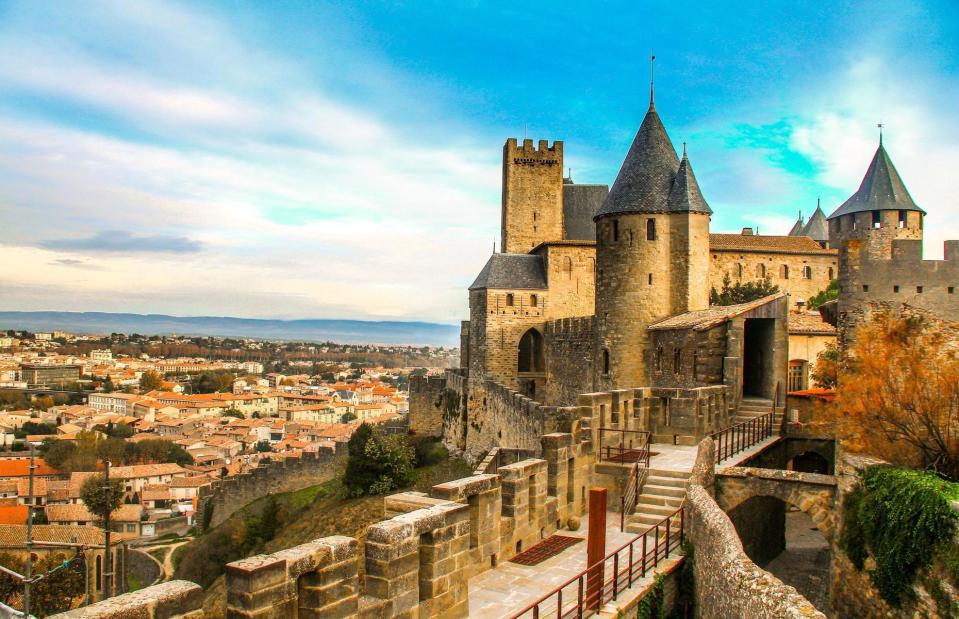
b-hide the scene/Shutterstock
A medieval walled city perched on a hilltop in southwestern France, Carcassonne looks like the perfect setting for duelling knights and fire-breathing dragons. The settlement was occupied since pre-Roman times, although the oldest buildings standing today date back to the 13th century.
Initiated by architect and medievalist Viollet-le-Duc in 1844, the restoration of the cathedral and city walls continued through the late 19th century.
San Miguel de Allende, Mexico

Kevin Schafer/Alamy Stock Photo
Founded by a Franciscan monk in 1542, San Miguel de Allende was the first Spanish settlement in Mexico's Guanajuato region and served as an important silver-mining area during colonial times. Today, it's enchanting visitors with its delightful blend of old-world charm, cosy restaurants and lively nightlife.
The town's historic heart is an idyllic time capsule where cobblestone streets meet colourful façades and stone colonnades. Most magical of all is La Parroquía (pictured), an immense 18th-century, neo-Gothic church. It's made of pink stone and looks like it's been plucked straight from a Walt Disney film set.
Now check out the world's most beautiful cathedrals


